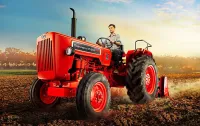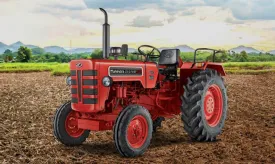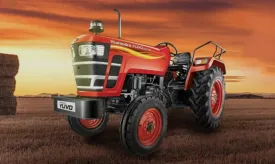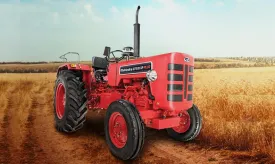How a Combine Harvester Works: Process, Uses & Key Benefits
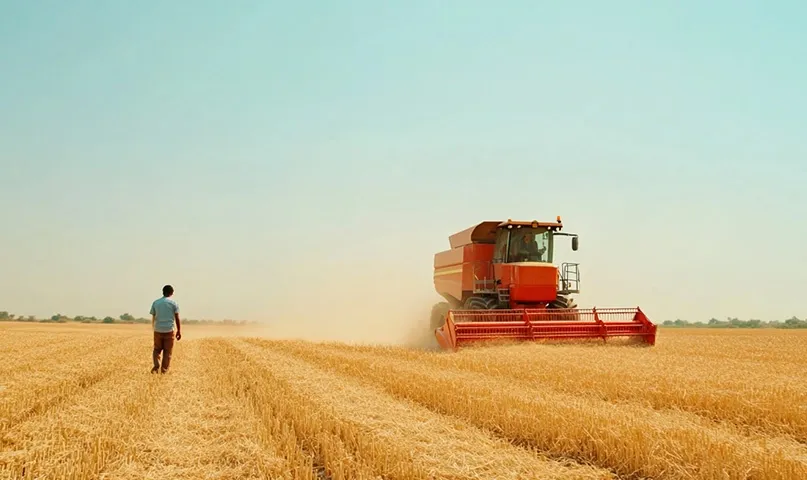
Agriculture has come a long way from the days of manual labor-intensive farming. As technology continues to revolutionize the industry, combine harvesters have become one of the most vital pieces of machinery in modern farming. These machines are designed to make the harvesting process faster, more efficient, and less labor-intensive. Let’s dive into the working, usage, and benefits of a combine harvester in today’s agricultural landscape.
What is a combine harvester?
A combine harvester is a multifunctional agricultural machine that combines three essential tasks—harvesting, threshing, and winnowing—into one efficient operation. These machines are primarily used to harvest a wide range of grain crops, including wheat, rice, corn, barley, and soybeans. By performing these tasks in one go, combine harvesters reduce the need for multiple operations, making them incredibly time-efficient and cost-effective.
How does a combine harvester work?

The working mechanism of a combine harvester involves several key stages:
1. Cutting and gathering: The harvester's header (the front attachment) cuts the crops at the base, gathering them into the machine. The header consists of cutting blades and augers that bring the crop toward the machine’s threshing mechanism. For specific crops, like rice, the header may be equipped with additional tools like reapers or pickup devices to ensure the crop is gathered efficiently.
2. Threshing: Once the crops are gathered, they enter the threshing system, where the grain is separated from the stalks. This is achieved using a rotating drum or cylinder that beats the grain from the plant, effectively separating it. The threshing mechanism ensures that only the grains move forward to the next stage.
3. Separation: After threshing, the grains and chaff (broken pieces of stalk and other plant matter) are separated. The separation system uses a combination of sieves, air blowers, and shaker tables to ensure the clean separation of grain from the residue.
4. Winnowing: The final stage involves winnowing, which is the process of cleaning the grain by blowing away any remaining unwanted plant debris. This helps in getting high-quality, clean grains for storage or transport.
5. Grain storage: The harvested and cleaned grain is then stored in the grain tank of the combine harvester until it is ready for unloading. The operator can unload the grain into a truck or storage container through a discharge auger.
Usage of a combine harvester

Combine harvesters are used primarily for large-scale, high-volume grain harvesting, but their versatility allows them to be employed in various crops and agricultural environments:
1. Grain Harvesting: The most common use of combine harvesters is for the harvesting of cereal crops, such as wheat, corn, barley, and soybeans. These machines can operate on fields of various sizes, from small to extensive acreages.
2. Rice and other specific crops: Specialized headers and attachments enable combine harvesters to efficiently harvest rice, millet, and other similar crops. They are designed to handle the unique requirements of different grains, ensuring minimal crop loss.
3. Flexible attachments: Combine harvesters can be equipped with different headers and accessories, such as flexible headers for low-lying crops, corn heads, or soybean heads for specific harvesting tasks, enhancing their adaptability to different farming needs.
4. Efficient harvesting in large fields: Combine harvesters are particularly useful in large, open fields where manual harvesting would be too time-consuming and labor-intensive. They cover large areas in a short amount of time, making them ideal for commercial farming.
Benefits of using a combine harvester

The combine harvester has numerous advantages that make it a must-have tool for modern farming operations. Here are some of the key benefits:
1. Increased efficiency: Combine harvesters, often used alongside tractors, perform multiple tasks—cutting, threshing, separating, and winnowing—simultaneously, making the harvesting process much faster than traditional manual methods. A task that could take days with manual labor can now be completed in a fraction of the time.
2. Labor savings: Using a combine harvester significantly reduces the need for manual labor. Instead of employing large teams of workers to harvest crops, one or two operators can efficiently manage a combine harvester, freeing up labor for other tasks on the farm.
3. Reduced crop loss: The precision and efficiency of a combine harvester reduce the likelihood of crop loss that often occurs in manual harvesting due to weather conditions or human error. The machine ensures that grains are harvested at the optimal time, minimizing waste and increasing yield.
4. Improved crop quality: Because the combine harvester’s threshing and winnowing systems are designed to clean and separate the grain from debris, the harvested grain is of higher quality. Clean, debris-free grain leads to better storage and a higher market price.
5. Versatility: Combine harvesters are highly versatile and can be adapted to different types of crops. With interchangeable headers, these machines can harvest a variety of crops from corn to rice, and even cotton and sunflower. This adaptability makes it a valuable tool for multi-crop farmers.
6. Time and cost savings: By reducing the time spent on harvesting and the number of workers needed, combine harvesters provide substantial time and cost savings. Farmers can harvest larger areas in less time, leading to faster turnaround times and potentially more harvests per season.
7. Improved harvesting conditions: Modern combine harvesters are equipped with advanced technology that enables them to operate in various conditions. They can handle uneven terrain, wet fields, or difficult weather, ensuring that the harvest continues even under less-than-ideal conditions.
8. Precision technology: Many combine harvesters today come with advanced technology such as GPS systems, yield mapping, and automatic steering, allowing farmers to optimize their harvesting strategies. This technology helps improve efficiency, reduce waste, and make data-driven decisions for future crop management.
Conclusion
The combine harvester is a cornerstone of modern agriculture, providing unmatched efficiency, versatility, and precision in harvesting. Its ability to combine several steps of the harvesting process into one machine makes it an indispensable tool for large-scale farming operations. With benefits such as time savings, labor reduction, improved crop quality, and increased efficiency, the combine harvester has transformed the way crops are harvested, enabling farmers to meet the growing demands of the global food supply. Whether it’s a small family farm or a large commercial operation, the combine harvester is a valuable investment that helps optimize harvests, reduce costs, and increase overall farm productivity.









